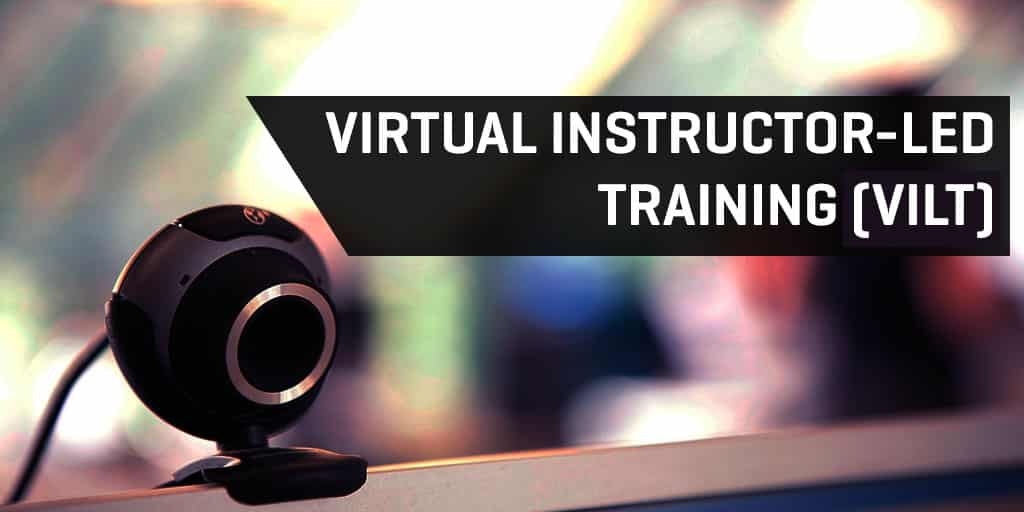5 Factors For Successful Virtual Instructor-Led Training

Employee training has never been more critically important to business growth. At the same time, marketplace pressures like globalization, shrinking budgets and employee turnover are dramatically altering the way training is structured and delivered in the workplace.
Fortunately, technological innovations have paved the way for the growth of virtual instructor-led training (VILT). In the new hybrid environment — where teleconferencing technology, digital teaching tools and virtual learning labs expand the concept of the traditional classroom — VILT can serve as a highly effective learning platform for your business.
Here are the key benefits of virtual instructor-led training and five factors that contribute to its successful implementation:
Traditional learning costs are significantly reduced. In the recent past, training expenses often made learning a problematic process to include in an employee’s development. Between costs associated with travel, accommodations, lost time and training itself, it was tough to make the case for extensive learning on the job.
VILT changes all that.
- Travel. There’s no need for employees to travel to an off-site location for training.
- Accommodations. By not having to travel, employees don’t incur hotel costs.
- Lost time. The time sacrificed for travel and off-site classroom training is dramatically decreased. “As VILT training [involves] shorter modular delivery and requires no time off work to travel, the savings can be significant,” notes Tim Wright, performance improvement consultant at Dell.
- Materials. Legacy training materials like printed lessons, workbooks, etc., are replaced by cost-effective digital material.
Online training extends the benefits of traditional classroom learning. The value of the person-to-person instructional model is extended through VILT. Employees benefit from instruction led by a virtual instructor, just as students in a traditional classroom setting experienced in the past.
Also, the newer model provides an ongoing learning experience, with plenty of variation to keep employees engaged and motivated (tools can include social media, surveys, contests, video, etc.).
VILT addresses many of the challenges raised by attempts to train a globally dispersed workforce. Participants in remote locations can experience high-quality training at the same time as those in an on-site setting.
Factors to Consider for a VILT Event
As noted below, there are five key factors to keep in mind for a successful VILT event:
- Create an equal environment. On-site students and those remotely located should receive equal attention from the instructor. These students should be encouraged to actively exchange ideas, questions, suggestions, etc., via live chat features, video and private messaging.
- Support the event. Employees should be provided with appropriate equipment (headset, microphone, etc.), while supervisors overseeing the event should use dual monitors to watch for any technical glitches. A post-analysis report should assess the effectiveness of the event.
- Prep the instructor. Obviously, the instructor should be knowledgeable about operating virtual training technology and know what materials work best in a virtual instructor-led environment.
- Prep the student. Employees benefit from a “pre-flight checklist” so they can ensure all systems are functioning and that they understand how to operate the interface. Be sure they also know how to alert the instructor if an equipment problem occurs or they need to leave the class.
- Prep the content. Again, instructor content must be applicable for ILT and virtual delivery. Content should lend itself to collaborative opportunities between on-site and remote participants. Add an element of fun by including games and other learning-engagement tools.
By supplementing the benefits of a traditional classroom, VILT has paved the way for a transformation in the employee learning experience. Technology continues to evolve that will position this type of virtual learning at the forefront of training for businesses today and into the foreseeable future.
Have you read?
- The 10 Immutable Laws of Security – Revisited
- How Culture Built One of the World’s Fastest Growing Fitness Franchises
- How to Maximize LinkedIn’s New Endorsement System as a CEO
- Habits That Will Turn Your Productivity Upside Down
Bring the best of the CEOWORLD magazine's global journalism to audiences in the United States and around the world. - Add CEOWORLD magazine to your Google News feed.
Follow CEOWORLD magazine headlines on: Google News, LinkedIn, Twitter, and Facebook.
Copyright 2025 The CEOWORLD magazine. All rights reserved. This material (and any extract from it) must not be copied, redistributed or placed on any website, without CEOWORLD magazine' prior written consent. For media queries, please contact: info@ceoworld.biz








